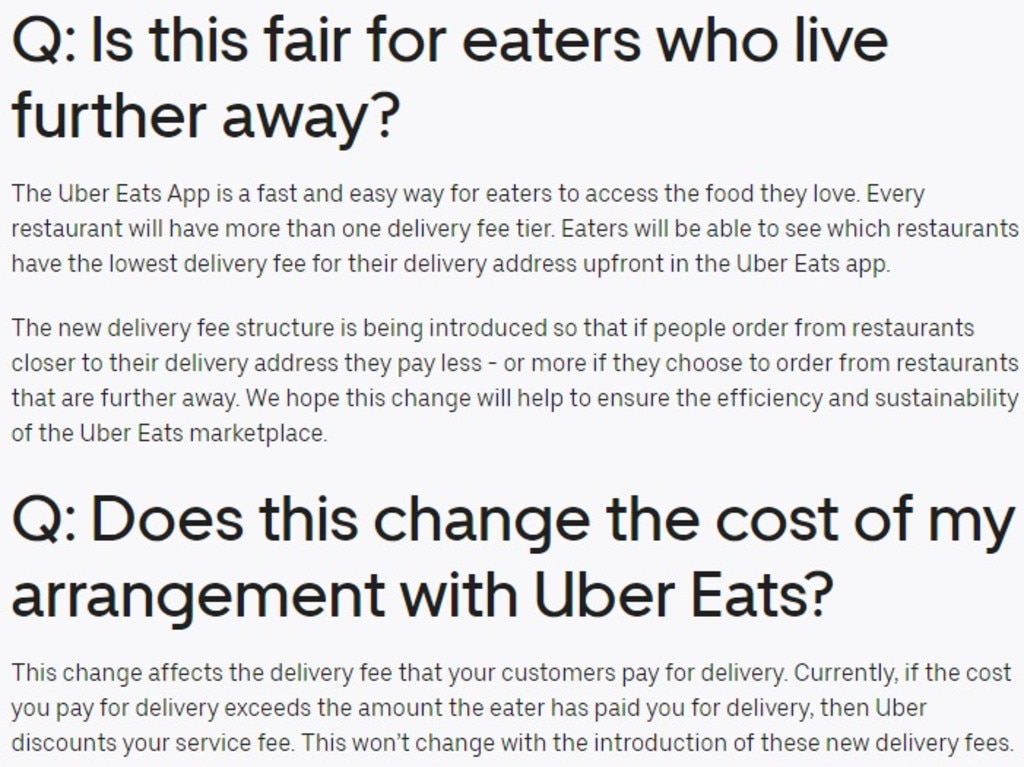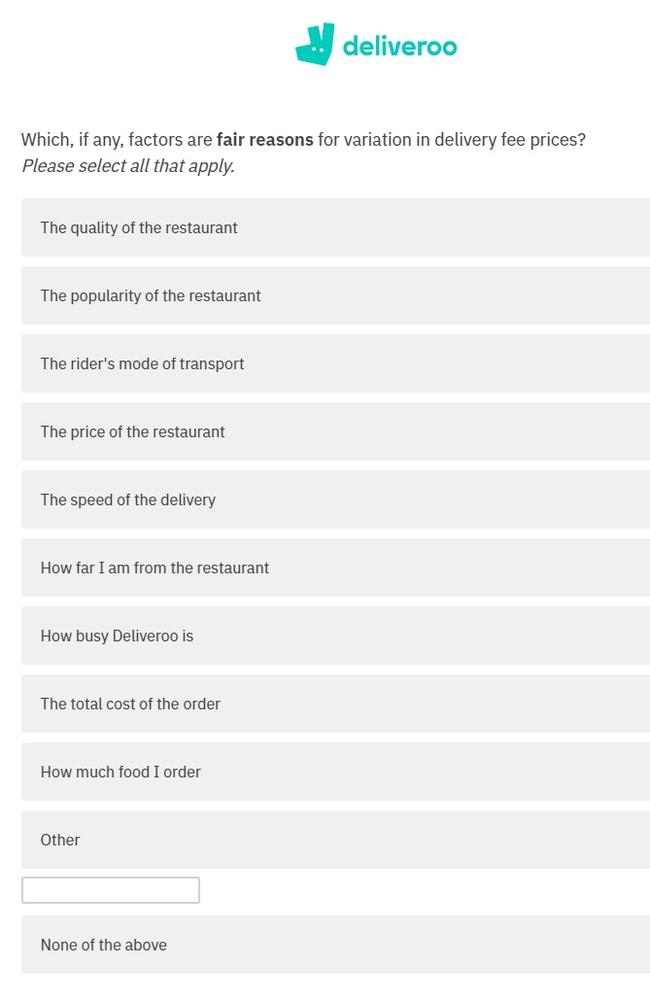UberEats rolls out long distance fees and ‘busy area’ surge pricing as Deliveroo mulls ‘fair reasons’ for hikes
If you like to order delivery from restaurants far away, or at peak dinner time, your meal is about to get more expensive.
UberEats is trialling a new dynamic delivery fee model that will introduce different pricing “tiers” based on the customer’s distance to the restaurant, the company announced in a blog post.
The company says the aim of the trial is “to explore whether technology can help unlock more affordable delivery fee options for eaters, while still giving them access to restaurants further away but at a higher price”.
It’s not clear whether the average customer will pay more or less. Rival Deliveroo rolled out a similar system last year. At the time, it said “more than 50 per cent” of customers were paying less than before.
In the blog post, UberEats addressed “frequently asked questions” from restaurants, including concerns that cheaper prices for local customers would make them less likely to visit in person.
“We know eaters choose to order meals via online food delivery apps for a number of reasons, and we’ve seen that generally they have already committed to staying in — not eating out in person,” UberEats said.
“By making food delivery more affordable for people ordering from nearby restaurants, we hope you might ultimately see an increase in the number of orders for your restaurant.”
Oddly, UberEats chose not to answer a question posed to itself, “Is this fair for eaters who live further away?”, instead restating that people ordering from nearby restaurants “pay less, or more if they choose to order from restaurants that are further away”.
“We hope this change will help to ensure the efficiency and sustainability of the UberEats marketplace,” the company said.

It comes as UberEats prepares to introduce surge pricing. Starting in November, customers ordering during peak times will pay a “busy area fee”.
“With the rollout of delivery partner surge, delivery partners may receive a higher fee for completing deliveries during periods of high demand,” the company said.
“This is designed to encourage delivery partners to deliver meals when it’s busy and help keep the marketplace reliable.”
UberEats said busy area fee would be clearly displayed on the app before the order was placed “so users could decide whether they want to order food now or wait”. The fee is currently capped at $10.
Deliveroo, meanwhile, appears to be mulling similar tweaks to its fees.
In a survey distributed to members of its $20-a-month “plus” subscription service, the UK-based company is asking customers what they would consider “fair reasons for variation in delivery fee prices”.

Options include quality, popularity, mode of transport, speed, distance, total cost and order size — and “how busy Deliveroo is”.
While it’s not set in stone, customer surveys are typically a good indicator of what options companies are considering. The responses could inform the decision to go ahead — or if the decision has already been made, to prepare for the backlash.
A Deliveroo spokeswoman said the company had “no immediate plans to change our fee structure for customers but we are always looking for ways to give customers the best possible offer”.
UberEats did not immediately respond to a request for comment.
The $280 million online food delivery sector, which is currently dominated by Menulog with UberEats and Deliveroo roughly tied in second place, is “extremely competitive”, as was partly demonstrated by the exit of Foodora from the Australian market in August last year, said IBISWorld senior industry analyst Michael Youren.
The convenience they provide is “increasingly being met in new ways”, according to Mr Youren, such as the growth of “heat-and-serve” prepackaged foods at supermarkets, particularly the likes of subscription service Marley Spoon.
“As a result of the significant level of competition, providers are by necessity looking at new ways of generating more revenue. Variable pricing models can be seen as examples of this,” he said.
“In some cases, customers will benefit as the new minimum fees for nearby restaurants will fall below the previous flat rates. However, it can be expected that in most cases fees will increase when compared with previous pricing models.”
The sector is also beset by controversy. Many restaurants complain the fees of 30-35 per cent make orders unprofitable, while delivery drivers have accused the platforms of exploitation.
Last week, the Transport Workers Union revealed it was launching action against Deliveroo in Australia over the alleged underpayment of delivery rider Jeremy Rhind, who claims he was paid around $10.50 an hour, about $9 below minimum wage.
The union won the first case in Australia against a gig economy company last year with a victory over Foodora.
“This rider faced what thousands of food delivery riders endure every day — getting ripped off their wages. We don’t accept this and we will fight it,” said TWU national secretary Michael Kaine.
At the time, a spokeswoman said Deliveroo “offers well paid, flexible work to more than 8000 riders across Australia, who are all independent contractors”.
“This enables riders to choose when, where and whether to work, with the flexibility and freedom riders repeatedly tell us they want,” she said.
“On average Deliveroo riders in Australia work 15 hours a week, earning over $22 per hour on average, fitting riding around study, hobbies, caring responsibilities or other work. We will always defend riders’ ability to choose to work this way.”
If Deliveroo was forced to pay riders as employees, “the flexibility they enjoy today would be removed and they would have to work exclusively for Deliveroo in fixed shift patterns, which is not the way of working riders tell us they want”.




